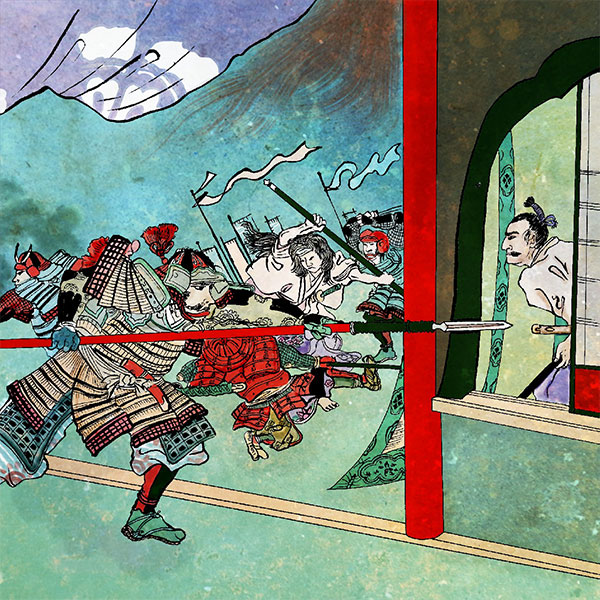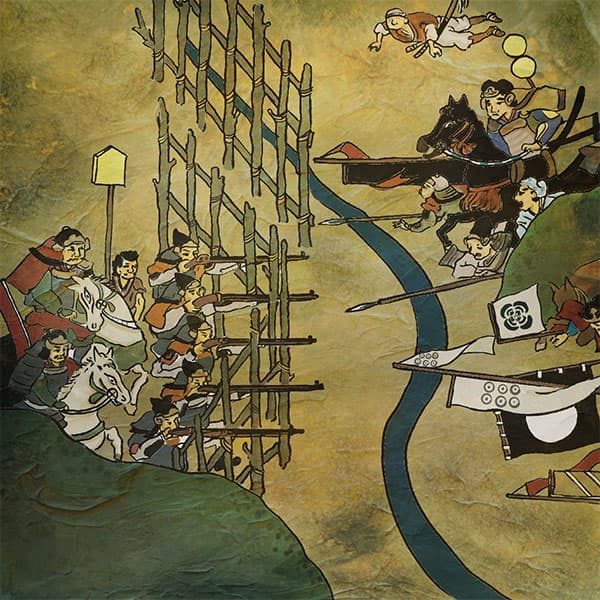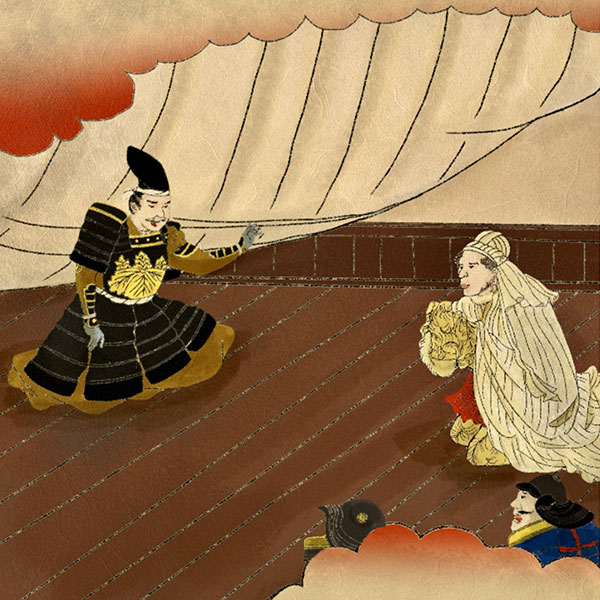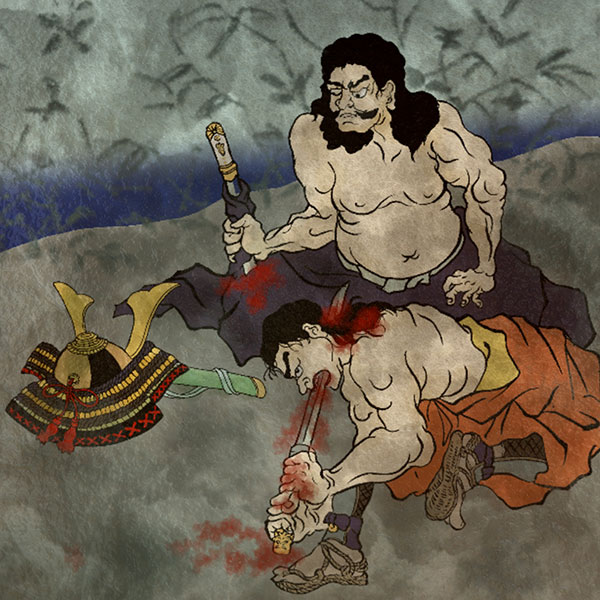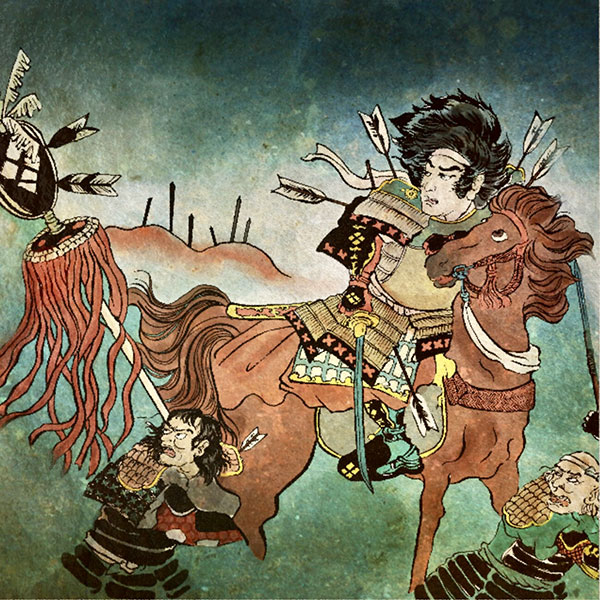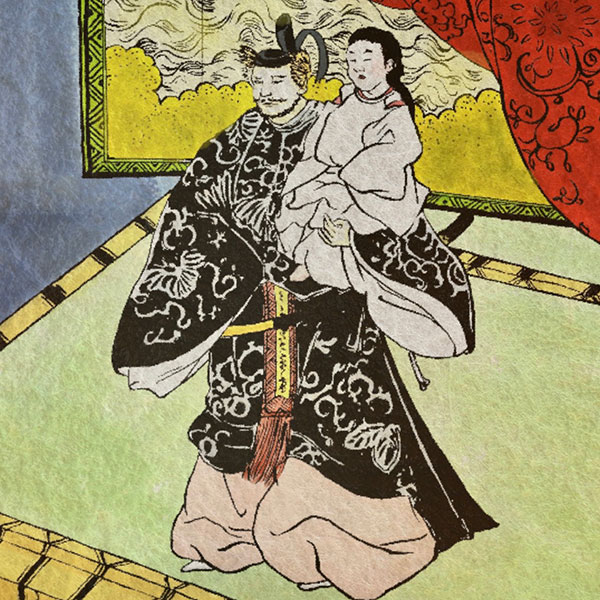Nobutada Oda (1/2)The heir who died following his father, Nobunaga
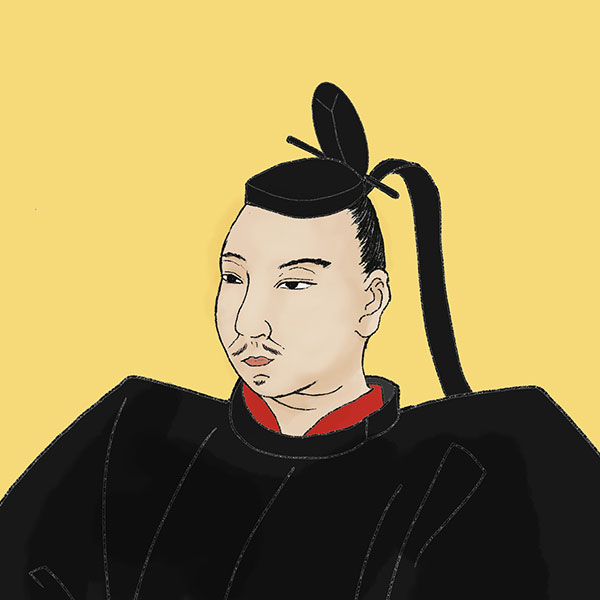
Oda Nobutada
- Article category
- biography
- name
- Oda Nobutada (1557-1582)
- place of birth
- Aichi prefecture
- Related castles, temples and shrines

Gifu Castle
- related incident
During the Sengoku period, Owari Province produced many famous feudal lords, including Oda Nobunaga, Toyotomi Hideyoshi, and Tokugawa Ieyasu, who would later be known as the Three Heroes of the Sengoku Period, as well as Kato Kiyomasa and Maeda Toshiie. Oda Nobutada was born as the eldest son of his father, Nobunaga, and was expected to lead the next generation, but he ended up committing suicide to follow his father, who died in the Honnoji Incident, and he went on to have a major impact on subsequent generations. In this article, we will introduce the life of Oda Nobutada.
From birth to childhood
Oda Nobutada was born in Owari Province in 1557 as the eldest son of Oda Nobunaga. One theory is that he had an older brother, Nobumasa, but the truth of this is unknown. His biological mother is also unknown. Another theory is that she was Ikoma Yoshino, a concubine of Nobunaga, but the veracity of this theory is also unknown. According to the "Seshu Gunki," it is said that Nobunaga's childless wife, Nōhime, adopted Nobutada. It is known that his wet nurse was Jitokuin (Takigawa clan).
His childhood name was Kimyomaru. After he came of age, he first called himself Kankuro Nobushige, and later changed his name to Nobutada.
During the Eiroku era, the Oda clan bordered the Takeda domain of Kai province in Mino province, and the daughter of Toyama Naoren, a lord of eastern Mino province, was adopted by Nobunaga and later became the wife of Suwa Katsuyori, the heir of Takeda Shingen, resulting in a marriage alliance.
According to the Koyo Gunkan, after Katsuyori's wife died in November 1567 (Eiroku 10), Nobutada became engaged to Takeda Shingen's sixth daughter, Matsuhime, in order to strengthen the alliance with the Takeda.
Although the Takeda and Oda continued to maintain friendly relations, during the Eiroku era, the Takeda clan launched military invasions of the Mikawa and Totomi territories of Tokugawa Ieyasu, an ally of the Oda clan. Furthermore, in 1572, Shingen launched an invasion of Oda territory in response to the efforts of Ashikaga Yoshiaki, the 15th Shogun of the Muromachi Shogunate, who was an enemy of Nobunaga, to encircle Nobunaga (Operation West).
As a result, the alliance and friendship between the Takeda and Oda clans was dissolved, and the engagement between Oda Nobutada and Matsuhime was effectively dissolved; the marriage did not take place.
After the death of Takeda Shingen, his successor Takeda Katsuyori tried to improve relations with the Oda clan (Koganewayo), but Oda Nobunaga refused to make peace, and no peace agreement between the Takeda and Oda was reached.
From coming of age to first battle, youth
The "Seshu Gunki" and other records state that Nobutada came of age in January 1572, but in the "Kanemi Kyoki" dated April 1, 1573, and the "Asakawa Documents" dated June 18 of the same year, he is still referred to by his childhood name "Kimono," and the first appearance of his given name "Nobushige" was in July of the same year. In the "Nobunaga Koki," the record of his march to attack Azai in northern Omi on August 12 of the same year shows his name changed from "Kimono" to "Kankuro," so it is speculated that, although it was a little late for that time, Nobutada may have come of age at around 17 to 19 years old.
There are various theories about the exact date, so it is unclear at present. The first battle is said to have been on July 19, 1572 (Genki 3), when Nobutada put on his armor and then attacked Asai.
From then on, he followed his father, Oda Nobunaga, and fought in various battles, including the Battle of Ishiyama, the Battle of Iwamura Castle in February 1574, and the siege of Nagashima in Ise from July to September 1574. In May 1575, he won the Battle of Nagashino, and went on to fight as the supreme commander in the siege of Iwamura Castle (Battle of Iwamura Castle). He achieved military success by repelling a nighttime attack by the Takeda forces, killing over 1,100 troops, and defeating Takeda general Akiyama Torashige (Nobutomo), forcing the surrender of Iwamura Castle. From then on, Oda Nobutada's military fame grew even more in the series of battles against the Takeda clan.
Inheritance of the Oda family headship
On November 28, 1576, his father, Nobunaga, gave him the headship of the Oda clan, as well as eastern Mino and part of Owari Province, and entrusted him with ruling over them. He became the lord of Gifu Castle, with Nobunaga's wife, Nōhime, as his foster mother.
In addition, Nōhime's younger brother, Saito Toshiharu, became Nobutada's close aide (senior vassal). In the same year, he was awarded the rank of Junior Fifth Rank by the Imperial Court, and was appointed as Dewa no Suke and then Akita Castle Suke.
In February 1577, he took Nakano Castle in an attack on the Saika clan, and in March he defeated Suzuki Shigehide (Saika Magoichi) and others. In August, he became the commander-in-chief of the campaign to defeat Matsunaga Hisahide, who had rebelled again, and with Akechi Mitsuhide at the vanguard, he led generals including Hashiba Hideyoshi and took Shigisan Castle in Yamato, where Matsunaga Hisahide and his son Hisamichi were holed up (Battle of Shigisan Castle).
Due to his achievements, he was appointed as Junior Third Rank Left Middle Captain by the Imperial Court on October 15. From this time on, Oda Nobutada gradually began to take command of the various generals as the commander-in-chief of the Oda army in place of his father, Nobunaga.
On December 28th, he received eight of Nobunaga's tea ceremony utensils, and on the following day, 29th, he received three more. In 1578, Terumoto Mori mobilized a large army of over 100,000, and set up his headquarters in Takamatsu Castle in Bitchu. He then sent Motoharu Kikkawa, Takakage Kobayakawa, Tadaie Ukita, and the Murakami Navy, totaling 61,000 men, to Harima Province to lay siege to Kozuki Castle in an attempt to recapture it.
Nobunaga also sent reinforcements to rescue Kozuki Castle, including Akechi Mitsuhide, Niwa Nagahide, and Takigawa Kazumasu, with Nobutada as commander-in-chief. Hashiba Hideyoshi, who was besieging Miki Castle, also came under Nobutada's command, and a total of 72,000 Oda troops were deployed to Harima.
However, when the situation became deadlocked, Nobunaga ordered a retreat and focused on capturing Miki Castle. The lord and retainer of Amago Katsuhisa, who had been besieged in the castle, surrendered, and Kozuki Castle fell (Battle of Kozuki Castle).
On October 4th of the same year, Nobunaga dispatched his senior vassal, Saito Toshiharu, as the supreme commander of the reinforcements for Jinbo Nagazumi at the Battle of Tsukiokano in Etchu Province. The reinforcements included the Saito clan's Kajita clan, as well as the Mino and Owari clans under Nobutada's command. Oda Nobutada sent a letter to Saito Toshiharu saying, "I understand your difficulties."
Furthermore, from that year through the following year, 1579, he also took part in the suppression of the rebellion led by Araki Murashige that broke out in Settsu Province (the Battle of Arioka Castle).
In 1580, Sakuma Nobumori, who oversaw southern Owari, and Ando Moriyasu, one of the Three Great Men of Western Mino, were exiled, expanding Nobutada's domain in the two provinces of Mino and Owari.
Conquest of Koshu
In 1582, Oda Nobutada, as commander-in-chief of the Oda army, led 50,000 troops from Mino and Owari, and together with Tokugawa Ieyasu and Hojo Ujimasa, launched an attack on Takeda territory (the Kaishu Conquest).
Nobutada appointed Hidetaka Kawajiri and Kazumasu Takigawa as his military inspectors, and marched from the Ina area to capture Iida Castle and Takato Castle, which were the bases of the Takeda faction in southern Shinano. It is said that during the capture of Takato Castle, he himself led the charge to the side of the moat using a back entrance, broke through the fence, climbed to the top of the wall, and gave orders to his subordinates (The Chronicles of Nobunaga).
Nobutada's advance was so fast that Takeda Katsuyori was unable to recover and retreated from Suwa, burning down Shinpu Castle and fleeing. After that, Oda Nobutada continued his pursuit, forcing Katsuyori and Nobukatsu to commit suicide at the Battle of Tenmokuyama before his father, Nobunaga, entered the Takeda territory, destroying the Takeda clan.
On March 26, Nobunaga entered Kofu Castle and highly praised Nobutada's military achievements, gave him a kimono made of pear-grained lacquer, and declared his intention to "grant the ceremonies of the country to him." Although Oda Nobutada declined, Nobunaga considered this to be a declaration to both inside and outside the country that he would allow Nobutada to inherit not only the headship of the Oda clan, but also the title of ruler of the country.
As a reward for meritorious service, Kawajiri Hidetaka, a subordinate commander of the clan, was given Kai Province (excluding the Anayama Baisetsu domain) and Suwa County in Shinano Province, Mori Nagayoshi was given Takai, Minouchi, Sarashina, and Hanishina County in Shinano Province, and Mori Nagahide was given Ina County in Shinano Province, which gave him influence over the four provinces of Mino, Owari, Kai, and Shinano.
The Honnoji Incident and the End of Nobutada
On June 2, 1582, Oda Nobutada was staying at Myokaku-ji Temple in Kyoto (where Nobunaga often stayed) with his father, Nobunaga, to head to reinforce Hashiba Hideyoshi, who was besieging Takamatsu Castle in Bitchu. At this time, the Honno-ji Incident occurred.
- related incident

- WriterTomoyo Hazuki(Writer)I have loved history and geography since my student days, and have enjoyed visiting historical sites, temples and shrines, and researching ancient documents. He is especially strong in medieval Japanese history and European history in world history, and has read a wide range of things, including primary sources and historical entertainment novels. There are so many favorite military commanders and castles that I can't name them, but I especially like Hisashi Matsunaga and Mitsuhide Akechi, and when it comes to castles, I like Hikone Castle and Fushimi Castle. Once you start talking about the lives of warlords and the history of castles, there's a side of you that can't stop talking about them.


